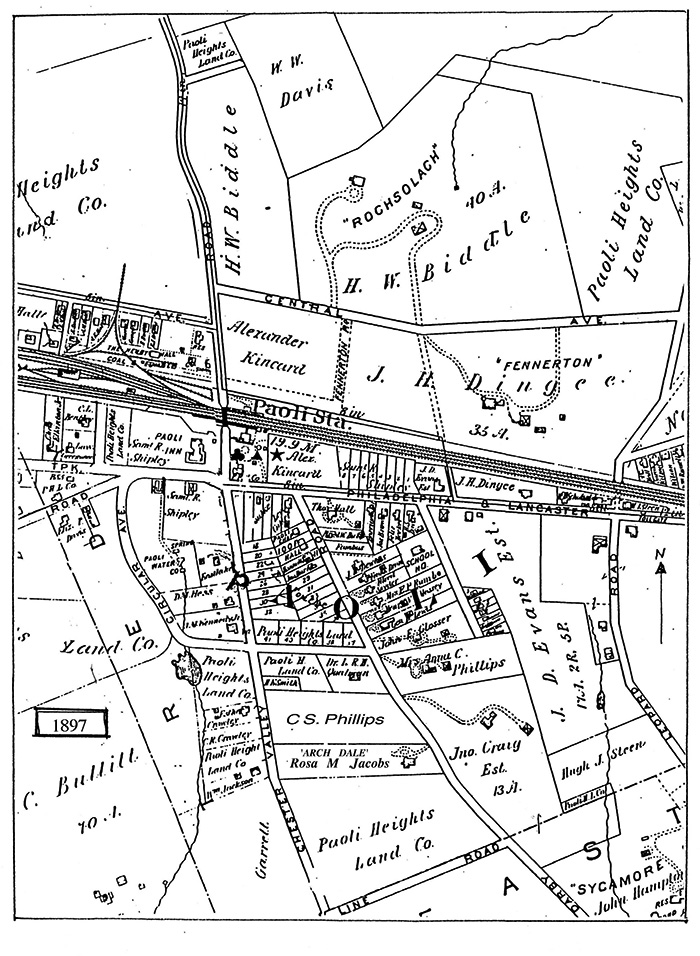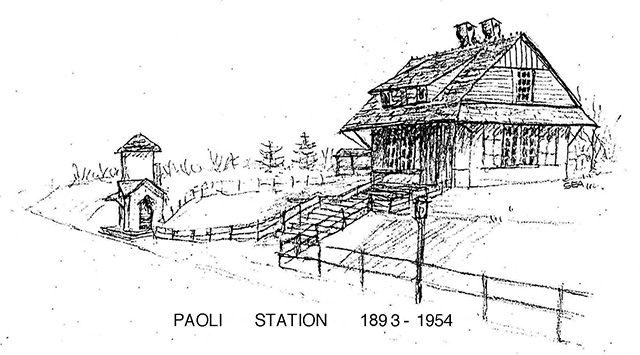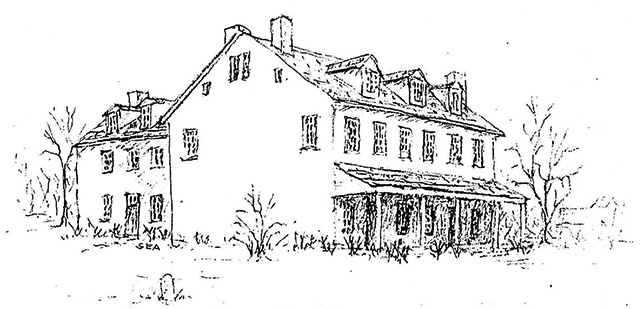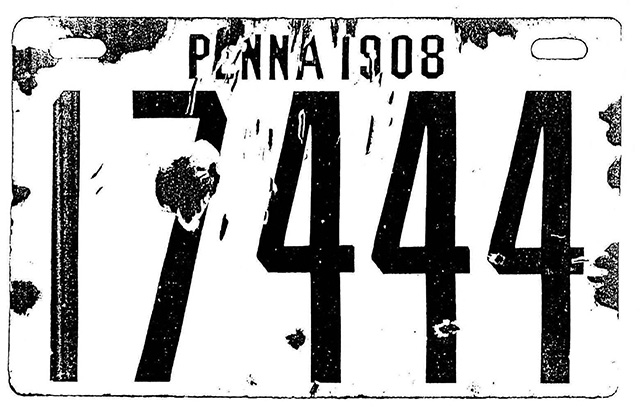|
Home : Quarterly Archives : Volume 40 |
||||
Tredyffrin Easttown Historical Society |
||||
|
Source: April 2003 Volume 40 Number 2, Pages 63–68 PAOLI THEN AND NOW: A SOCIAL TRANSITION To understand the magnitude of Paoli's transition during the 20th century we must look at the population growth. Since Paoli is not a political subdivision we will go to the Township for comparable population data:
In the late 19th century, the Pennsylvania Railroad controlled large tracts of land in the Paoli area and had drafted development plans utilizing small lots focused on a one-mile radius of the train station. These plans expected people, mostly men, to walk to the station and take the train into Philadelphia. Fortunately, these high-density housing plans were soon superseded. So, what changed early in the 20th century? The answer comes in one word - "AUTOMOBILE." For Paoli, in the early decades of the century, the auto fostered the first car dealer (Matthews Ford), caused gasoline stations to sprout, and was responsible for the demise of the Eachus Livery Stable, which was located on the present Wawa site. The livery stable was used by some of the rail commuters who drove a horse and carriage to Paoli and stabled their horse at Eachus's. By 1905 some people were driving cars to the railroad station and parked their cars there while the driver was in town. One of these early cars was owned by my grandfather, C. Colket Wilson. Attached to the end of this article is a copy of his 1908 license plate.
While the railroad provided impetus for Paoli's growth in the 19th century, it was of decreasing influence in the 20th century. There was probably some growth in Paoli ridership up to 1950 but poor service and equipment alienated customers. Similarly, freight service has practically disappeared on the Main Line. As an example, in 1892 the railroad built a freight line from Trenton to Glen Loch, bypassing the Philadelphia yards. Fifty years ago this line was used by 35 trains per day, each hauling over 100 cars. Today two trains use the facility, hauling only 40 to 50 cars each. Trucks have replaced rails for freight service.
Unlike the adjoining towns of Phoenixville, Downingtown, West Chester, and Coatesville, Paoli had no industry, except the maintenance shop of the railroad. This had one advantage in that Paoli men did not face the wholesale layoffs that occurred in industry during the 1930 Depression. Throughout the 20th century, retail establishments have enjoyed growth that parallels the increase in population. The demands of auto traffic have forced many changes. The toll booth on the Lancaster Turnpike, on the east side of Paoli, was closed about 1910 when the government took over the turnpike company. There was a terrible bottleneck where U.S. 30 (the Lincoln Highway) and U.S. 202 both squeezed into three lanes through the heart of Paoli. Getting in and out of Paoli's parallel parking spaces along the highway, amidst the traffic, was terrifying. Also, crossing U.S. 30 while on Valley Road was equally daunting until a traffic light was installed in 1938. Today, with most of the U.S. 30 traffic diverted to the Pennsylvania Turnpike, and U.S. 202 relocated to bypass Paoli, we now have at least 10 traffic signals. As the number of automobiles increased, so did the number of gasoline stations, until, by 1950, there were 13 in operation. Part of this growth was necessitated by the fact that most cars got very poor mileage, about 10 miles per gallon, and gas tanks only held 8 to 10 gallons. This contrasts with today's cars getting 15 to 20 miles per gallon and tanks holding upwards of 20 gallons. Today we have just 3 gasoline stations. There has also been a tremendous change in the retail food stores. By 1935 we had Dixon's Groceries, Hubb's Grocery, American Stores (later Acme), the Atlantic and Pacific Tea Company (A&P), and Paoli Produce, all located in two blocks along Route 30. Most of these stores would deliver orders to your house! Admittedly, there was a limited selection of items and most of the vegetables were canned. By 1950 frozen foods were supplanting the canned food markets. This also saved the housewife from doing some of her own canning. In addition to the stores, many of the foodstuffs were sold house to house. For bakery items we had the Bond Baking Company and Freihofer's, to name two of the most prominent ones. Dairy and egg products were distributed by Abbotts, Supplee, Nelson's Dairy, and a local supplier, Weaver's, located on Manor Road and West Chester Pike. Thus the housewife had only to make one trip per week to the stores. A very important delivery service was performed by the "ice man." Ice was made in a commercial-scale refrigeration system in a plant in Berwyn, and delivered to the house in 20-pound blocks, which the ice man would place in the McCreary's ice box. Coal was delivered to the house and sent to the basement coal pile by a temporary chute. Early deliverers of coal and ice were The Staats Company, Mack, located in Berwyn, and Isinger's. Most of these companies later switched to delivering heating oil as people took advantage of hassle-free fuel. While Paoli never had any scheduled air service, there was the Paoli Airport located on Swedesford Road. The airport housed about a dozen private planes by 1940. I had my first airplane ride from this airport in 1934 on a barnstorming Ford Tri-Motor plane. The first half of the century saw a comparatively gradual transition in schools as the population grew. The Township had at least 3 grammar schools, grades 1 through 8. The high school was located on South Valley Road in a building that is now the "Farrar Apartments." An interesting bit of history from this school centered on John Bechtel, a young teacher from Lancaster County. John had received a teaching certificate from a two-year normal school program, but wished to further his education. About 1910, John took a leave of absence at the end of the school year and matriculated at the University of Pennsylvania. Several of his students went with their teacher to Penn. One of them was Robert Hughes, who became a doctor and served the Paoli community for 50 years. In 1907 both Tredyffrin and Easttown Townships recognized the need for larger high schools. Special legislation was enacted in Harrisburg to form a joint venture: "The Tredyffrin-Easttown High school." This was the first joint school in the state. The Paoli building was used for a number of years as a grammar school, until a new school was built next to the train station. After 1950 the school population exploded! For most clothing needs the Paoli resident had to go to Mosteller's in West Chester or to Philadelphia. Exceptions for wealthy people were a women's dress shop on South Valley Road and Bruni's Tailors. We also had a dry-goods store operated by Mr. Comer and his wife that carried cloth, knitting wool, and "buttons and bows." The unique thing about this operation was that it was the perfect image of Harry Truman's store. This similarity even extended into politics with Mr. Comer being one of Tredyffrin's three supervisors. Another big change comes in our banking facilities. The first Paoli bank was established in 1923 (that is, if I can correctly read the Latin inscription on the front of what is now the First Union building). The first site was at the corner of North Valley Road and U.S. 30. In 1928 the current magnificent structure was built just in time to face shaky circumstances brought on by the Depression. During this period Claire Hughes was one of the early tellers, working for President, Fred Miller. Today we have six banks and numerous automatic teller machines. Unfortunately, we barely get to know any of the bank employees. One area where the "quality of life" has suffered is the loss of overnight lodging facilities. At the turn of the century we had the Paoli Inn and the General Jackson Inn, later known as the Windmill Tea Room, both of which
GENERAL JACKSON WAYSIDE INN - WINDMILL TEA ROOM originally served as hostelries for the Lancaster Turnpike. About 1920 the Tredyffrin Country Club was founded and it had an excellent clubhouse with overnight accommodations. Early in the century the Paoli Inn burned down, by 1950 the golf course was in bankruptcy and shut down, and finally, the tea room was torn down to make way for an Arco gas station. Probably the most significant "improvement in life" came with the advent of electricity around the turn of the century. Smelly oil lamps were replaced by light bulbs. Manual labor was replaced by electric motors. The kitchen "ice boxes" were replaced by electric refrigerators. Finally, the coal range was replaced by the electric stove. What did Mother do with all of the time saved by these conveniences??? A final downgrade in our "quality of life" comes in the way we now handle community projects. At the turn of the century prominent citizens would recognize a need and then get their friends together to provide a solution. When a library was needed for Paoli, Edward Newton, the noted bibliophile, personally raised the funds for the first library building. Similarly, another group consisting of Messrs. Page, Cox, Wilson, and Robinson raised funds for the first fire truck. Mr. Henry Woolman envisioned a hiking trail reaching from Valley Forge to Harrisburg and proceeded to raise the money and secure the legal permissions from landowners for hikers with help from others in the community. This trail is now known as the "Horse-Shoe Trail" and was originally blazed with yellow horse shoes. Today the local citizens look to the government to accomplish similar projects. These agencies tend to spend large amounts of money, hiring outside consultants, rather than making use of local talent. This comment is not aimed against projects, but merely to comment on the manner of execution.
|
||||



